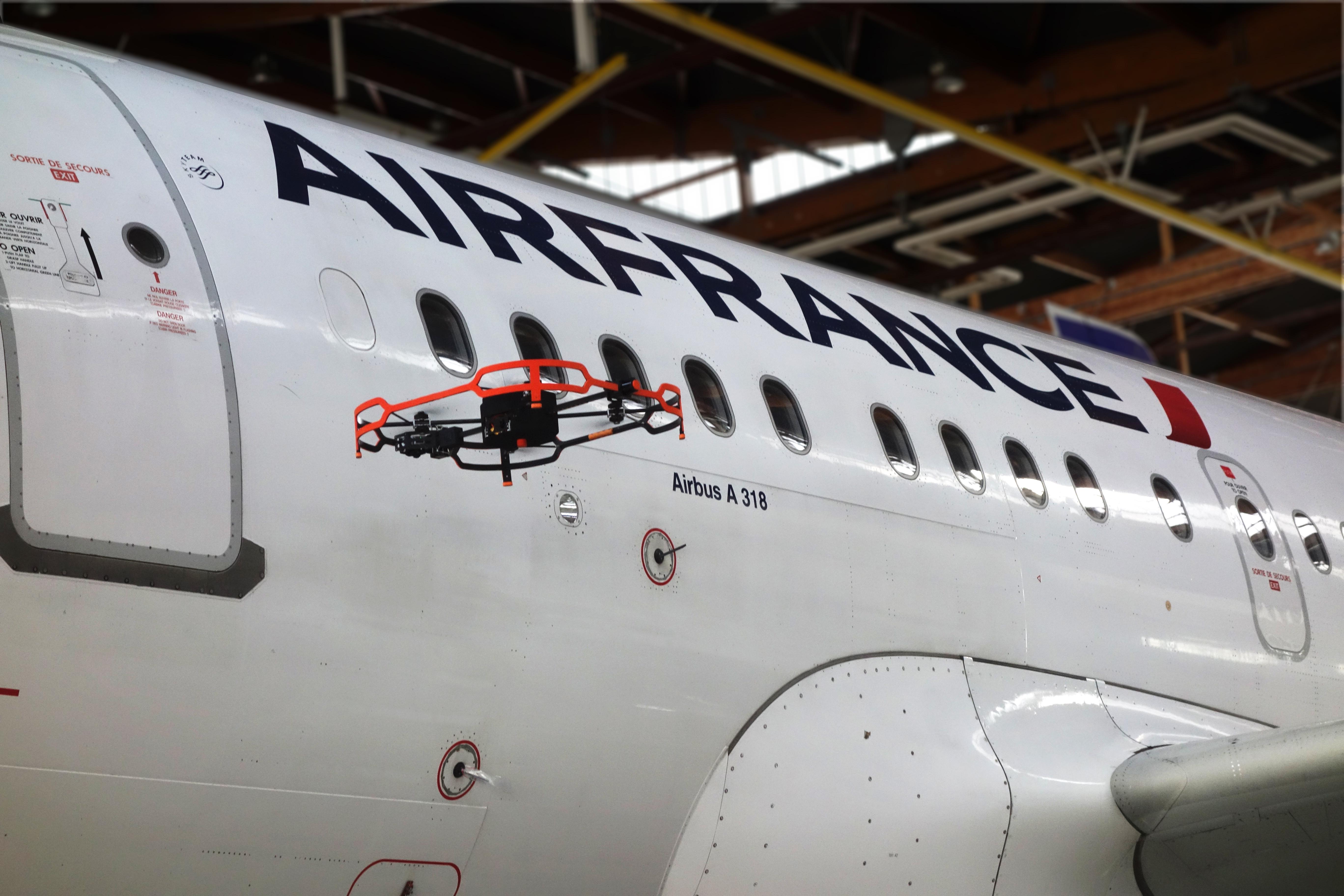
Ever since smaller drones started flying, their potential for important aircraft inspections has been foreseen. But years of testing and trials, interrupted by the COVID crisis, have delayed the regulatory approval necessary for drones to replace mechanics at these important jobs.
Now Airbus has qualified Donecle drones in its Aircraft Maintenance Manual for lightning inspections on A320-family aircraft, according to Donecle CEO Matthieu Claybrough. That means acceptance by EASA and FAA and should mean clearance of regulatory hurdles globally.
“We are helping set up three operators now to start this summer in a few weeks for the first AMM inspection,” Claybrough says. “It’s been a three-year wait for us.” His company is also in discussions with Boeing about similar qualification.
Donecle is partnering with 8Tree, which makes 3D surface inspection systems, to detect and measure airframe dents, and Clayborough expects to make a more detailed announcement of this venture at MRO Europe in October.
“It’s a significant and complementary step. Detecting and mapping dents is now a long and cumbersome process. This system will be 50 times faster.” The Donecle CEO predicts qualifying the partners’ dent tools will be easier and faster than the lightning approval.
Donecle’s progress is important because it is already widely used, by carriers like Air France, LATAM and Austrian, and MROs like AAR. Donecle drones have also been used to inspect France’s fleet of Dassault Rafales, where they help avoid damage to special aircraft coatings by mechanics.
And they have been used by paint shops, where the drones assess paint quality and gloss and ensure no ‘rivet rash’ is present. The devices have also been widely used by airlines for tasks that do not require regulatory approval, like surveying the state of liveries to schedule repaints and checking placards for proper positioning.
Progress with regulators will be welcome news for many Donecle customers.
For example, the pandemic hit AFI-KLM E&M’s drone inspection program hard for several reasons, according to Innovation Manager Jean-Philippe Loredon. He cites “the low activity of our mother airlines, Air France and KLM, and the numerous aircraft storage and retrieval operations in line with the travel program.”
Nevertheless, the MRO will adapt and maintain its drone-inspection program over the coming months. AFI-KLM E&M’s subsidiary Barfield recently signed agreements with two drone providers, one with Donecle to inspect aircraft and another with AERACCESS, for security surveillance.
The parent MRO has been using Donecle drones chiefly to inspect regulatory markings. Loredon says 30 mechanics have been trained to use drones for this task.
For the future, AFI-KLM E&M plans more ambitious drone use, including automating paint inspections to optimize repaints, automating lighting strike inspections and even automating engine inspections, for example assembly checks before and after shop visits.
“For the Air France fleet, we mainly work with Donecle,” Loredon notes. “But we are also in contact with other providers for sales and support in the Americas or testing innovative solutions such as engine assembly checks.”
The MRO manager ticks off the benefits he expects from drones: reducing risks of work at height; optimizing use of hangars, reducing or eliminating low value-added tasks, generating reliable and repeatable data; and improving turnaround times.
But Airbus approval of drones does not yet mean clearance for inspections of other aircraft.
For example, Regional Jet Center is a smaller MRO that repairs Embraers at Amsterdam-Schiphol and has also been active with drones, using them for both lightning and marking inspections.
“The pandemic actually gave the project a boost because we had many aircraft in the hangar and could test and collect data as much as possible,” says business innovation manager Remon Sweers.
On the other hand, because the pandemic reduced flights, RJC shifted its focus away from lightning inspections to inspections for the availability and readability of markings and placards.
Moreover, since drone lightning inspections of Embraers have not been approved by regulators, final lightning checks must still be done by mechanics. Sweers says the authorities understand the drone approach. “For them, it is a matter of gaining more proof and confirmation before they will fully release this way of working.”
The RJC manager emphasizes that the drone itself is only the first step. “The drone, together with machine learning software makes the real benefit, and that’s where our focus is on now.” Drone-plus- software inspections will be quicker and more reliable. “We already have seen the software is working, and it is just a matter of providing more data in order to develop.”
Sweers looks at the drone software as basically a new employee who has to learn a certain job. “Our tests so far show the software is already more reliable than the human inspector.” He is looking forward to using drones and these well-taught ‘employees’ in other areas, such as damage and periodic inspections.
Time savings should be significant. RJC’s average lightning inspection decrease from eight hours to 1.3 hours when drones take over the task.





